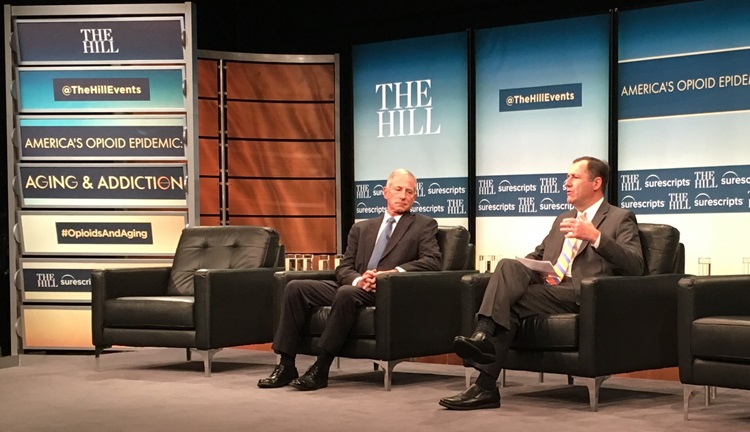As most of us know from the news coverage or personal experience, our nation is in the midst of an unprecedented opioid epidemic. Opioid overdose caused more than 33,000 deaths in 2015 alone, and kills 91 Americans each day.i
Recently, the federal government responded by declaring the opioid epidemic a public health emergency. And in late July, the Every Prescription Conveyed Securely (EPCS) Act, a measure which Surescripts supports, was introduced in the House of Representatives. If enacted, the EPCS Act will help save lives, encourage wide adoption of EPCS, help curtail criminal diversion of controlled substances and reduce healthcare costs by requiring e-prescribing of all controlled substance prescriptions under Medicare Part D by 2020.
While senior patients may not be the first group that comes to mind regarding drug addiction, it’s understood that aging can bring with it complex medical issues and chronic pain. And in the U.S., with pain comes prescription opioids like oxycodone and codeine. Beyond the problem of opioid dependency generated by lawful prescribing in the Part D program, Medicare has also been the target of criminal enterprises that use stolen and forged patient and provider Medicare credentials to procure opioids for illegal sale.
Surescripts and The Hill recently convened a panel of legislators and industry experts to share various perspectives on the scope of the impact the epidemic is having on senior patients, and the roles both the private and public sectors can play in addressing it. Watch the video: America’s Opioid Epidemic: Aging & Addiction.
During the event, panel participants shared key facts and insights to contextualize the discussion and illustrate the enormity of the problem.
- Ann Maxwell, assistant inspector general for evaluations at The Office of the Inspector General at the U.S. Department of Health and Human Services (HHS OIG), said that in 2015, opioid abuse cost the nation $4 billion.
- A recent report from the HHS OIG states that nearly 70,000 Medicare beneficiaries received "extreme" amounts of narcotic painkillers in 2016, with more than 22,000 demonstrating behaviors associated with “doctor shopping” for multiple prescriptions.
- According to the HHS OIG, one out of every three Medicare beneficiaries in the U.S. receives an opioid prescription.
- Andrew Kolodny, MD, co-director of the Opioid Policy Research Collaborative at Brandeis University said, “The opioid crisis is not an abuse issue. It’s an addiction epidemic,” and he called on the event participants to start treating it like one.
- Cynthia Reilly, Director, Substance Use Prevention and Treatment Initiative for The Pew Charitable Trusts said, “Right now, a third of all opioid-related hospitalizations are in the Medicare population. They are the payer for that.”
Prescription Drug Monitoring Programs (PDMPs) were discussed as an important electronic tool for prescribers, but are underused due in part to usability and formatting issues. Cynthia Reilly explained that, in a busy setting like an emergency room, “The doctor or nurse practitioner has just a few moments to look at that information and make a prescribing decision. So how can we help them do that? How can we present the information or manage the information in a way that makes it most useful and easiest to comprehend?”
This is achievable via other EHR-integrated technologies that deliver relevant data to the point at which the prescription decision is made. One example is medication history data sourced from pharmacies and pharmacy benefit managers (PBMs), which gives prescribers a much more complete picture of the medications a patient has been prescribed and by whom.
Our CEO Tom Skelton explained that, while this technology exists, it’s woefully underutilized. “As it stands today, if you have a script written for you and it’s not a controlled substance, you’ve got a 90 percent likelihood that it’s going to be digitized,” he said. “If, however, it is a controlled substance, chances are about 14 percent that it’s going to be done digitally. That’s just not acceptable.”
Steve Miller, M.D., Chief Medical Officer at Express Scripts, argued that making opioid prescription data available to all prescribers at the point of care, along with other solutions, will be “the single biggest aspect to changing opioid abuse, because we’ll have the data.”
Join Surescripts, the National Association of Chain Drug Stores (NACDS) and several other major healthcare organizations in supporting H.R. 3528, the EPCS Act. Read the final report from the President’s Commission on Combatting Drug Addiction and the Opioid Crisis and learn more about how EPCS is helping combat opioid abuse.


 Dean Riggott Photography
Surescripts
Dean Riggott Photography
Surescripts